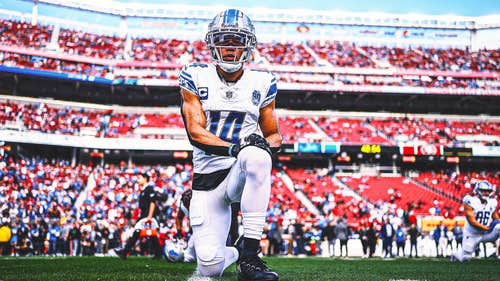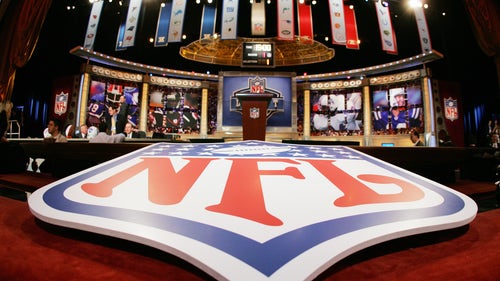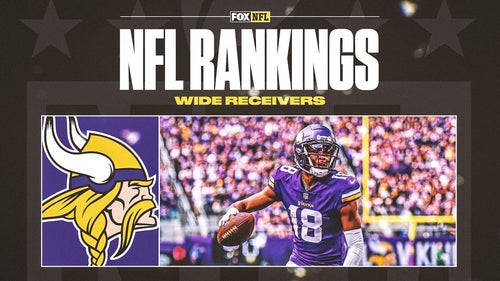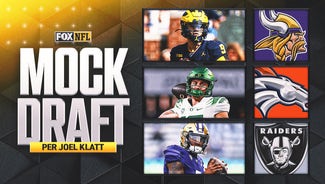
The Lions Playbook Ep. 5: The Screen Game
Oct 23, 2016; Detroit, MI, USA; Detroit Lions wide receiver Golden Tate (15) is unable to complete a pass for a touchdown as he is forced out of bounds by Washington Redskins defensive back Greg Toler (20) during the fourth quarter at Ford Field. Detroit won 20-17. Mandatory Credit: Tim Fuller-USA TODAY Sports
Two Lions (Theo Riddick – 3rd, Golden Tate – 8th) finished 2015 in the NFL’s top ten YAC list. and the case is no different this season.
Short and simple, a screen pass is a quick pass concept where the receiver catches the ball while behind the line of scrimmage. This allows the offensive line to go down the field to block whereas is a normal pass scenario, they would be flagged for illegal man downfield.
The Lions utilize five basic screen philosophies in their playbook, we will look at all five and how the Lions find success with them on game day.
Halfback Screen
The halfback screen is a useful tool to get the defensive pass rush to overcommit to the quarterback and get quick yards. The receivers usually have vertical routes in an attempt to clear the coverage as far down the field as possible.
The key part here for Stafford is to get a big drop, sell the downfield pass, and then make a good throw to the back.
Check this 4th quarter touchdown against the Philadelphia Eagles. The right guard and center both slip out to the right and make two key blocks downfield leading to the touchdown.
And another score by Theo in week 1 in Indianapolis.
Though Stafford is hit, he catches the edge pressure committing to the quarterback and the play goes for a touchdown.
Wide Receiver Screen
While they both use the title “screen”, the dynamic of the WR screen is different than the standard screen from the backfield. There are a few variants to the WR screen and the Lions utilize all of them in their playbook. First, we will take a look at a screen to the outside receiver.
The read for the quarterback pre snap is how close the defensive back is to the LoS. Ideally, the corner playing the target receiver is off the line of scrimmage, as a press man corner is too close to risk the throw.
Screen plays usually utilize a two wide receiver set. The outside receiver gets the pass. The slot receiver will run to block the corner covering the target receiver, and the tight end or tackle on that side will bail in protection at the snap and run to block the defender who was lined up to cover the slot receiver.
Watch this 2nd and 20 conversion by the Lions against Washington. RT Riley Reiff does an excellent job and getting down the field and making a key block to get Tate one on one with a safety for the first down.
While the corner was pressed up on Tate pre-snap, Tate make a step down field to get the corner in his back pedal, and comes back to the football to make the grab.
Here’s a good angle on a screen run later to the left in the same game.. Notice how the linemen create a huge lane for Tate to run through.
Run Pass Option
The Run Pass Option, or RPO is used in all areas of football and predominately in the screen game. It is two plays built into one, with a focus on numbers and match-ups. Sounds confusing, but it’s easy. Kind of.
The concept is that the play called is a run play. Whether it be a zone option, power run with a pulling guard, or an off tackle play its just a strong side run. On the back side of the play, you will see two receivers lined up wide.
The quarterback will then see the matchup and what you are looking for on the back side is even numbers, If he sees the defense lined up in with 3 or more defenders in close proximity to the play, then you will hand the ball off and call it a day. But, in the event that there is an isolated 2-on-2 situation then the quarterback, at the snap, will just turn and throw the screen. In order to avoid a defensive adjustment, the quarterback usually won’t make an audible call. The play is designed so the receivers know it is coming based on the number matchup and the screen is thrown.
Confused? Let’s use this play against the Rams for example.

Photo credits: NFL Game Pass
Assuming the edge rusher on the weak side crashes down, we see a two-on-two match-up. Stafford throws the screen as Marvin blocks the outside corner while right tackle Riley Reiff absolutely crushes inside corner. The common denominator here is just how athletic this line in their ability to get down field and make a block.
The common denominator here is just how athletic this line in their ability to get down field and make a block.
Tunnel Screen
The tunnel screen is another variant of a WR screen designed to get the ball carrier into the middle of the field. The receivers will often shoot vertical off the snap, and the screen receiver will break his route inside underneath those vertical routes who will eventually become lead blockers.
A key component here is selling vertical routes but also the play side tackle’s role changes. Because the ball in being thrown to the center of the field, the tackle will cut the legs of the pass rusher to get them to fall. This opens up the passing lane for the quarterback to deliver the strike, Without a successful cut block, this ball gets batted and possibly intercepted.
Bubble Screen
Up to this point, all the WR Screens create lanes to the inside, the bubble screen works from inside to out as the slot receiver moves away from the quarterback at the snap and the outside receivers will block the corners in front of them to seal the edge.
Bubble screens leave the man covering the target receiver unblock in an attempt to force that player to fight around the other blocks to get to the tackle. This is a variant that Detroit has not run often, but here it is used in a trips set against the Washington Redskins.
Due to injuries to both Ameer Abdullah and Theo RIddick, the Lions have placed an importance on the short pass to make up for the lack of production in the run game. Many will point to this as Stafford benefiting from good receivers but thats just how success in a spread or west coast offense is created.
The Lions are really good at the screen game and expect that to continue until someone finds out how to tackle Golden Tate and Theo Riddick.
If you enjoyed this breakdown shoot me a tweet @FinleytheHuman. I enjoy any feedback and your thoughts as well.
More from SideLion Report
This article originally appeared on
















































































































































